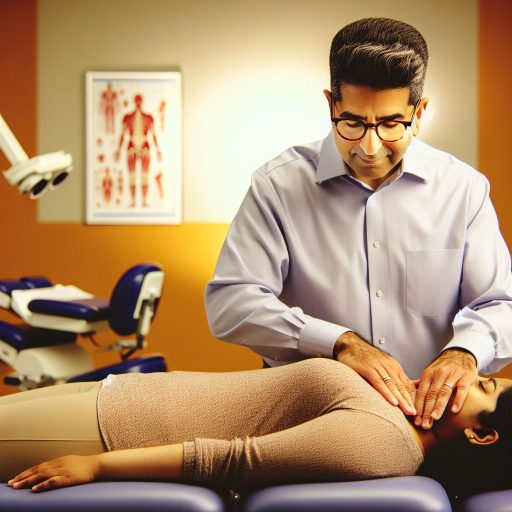Introduction to Dental Tools and Technologies
Dental tools and technologies play a vital role in modern dentistry.
They enhance the effectiveness and efficiency of dental treatments.
Additionally, these tools promote patient comfort and safety.
In recent years, advancements have transformed dental practices.
These innovations have made procedures quicker and more precise.
Furthermore, new technologies allow for better diagnostics and planning.
Ultimately, the integration of these tools is crucial for quality care.
Understanding their importance helps both patients and practitioners.
Essential Dental Instruments
Every dentist relies on specific instruments during treatments.
These instruments can be categorized into several types.
- Examination tools, like mirrors and probes, assess dental health.
- Surgical instruments facilitate procedures like extractions and biopsies.
- Restorative tools aid in cavity fillings and crown placements.
Moreover, maintaining the right tools is essential for hygienic practices.
Regular sterilization helps prevent infections and complications.
Innovative Technologies
New technologies have revolutionized patient experiences in dental offices.
Digital imaging systems provide clearer visuals for diagnostics.
These systems include digital X-rays and intraoral cameras.
Additionally, CAD/CAM systems streamline the design and creation of restorations.
- They enable same-day crowns, reducing patient waiting time.
- Moreover, they enhance the fit and longevity of dental work.
Finally, laser technologies improve treatments for gum disease and teeth whitening.
Overall, these advancements lead to better outcomes and patient satisfaction.
Basic Hand Instruments
Overview of Essential Tools Used by Dentists
Dentists rely on a variety of instruments to provide effective care.
These tools are fundamental in ensuring patient comfort and successful treatments.
Hand instruments remain at the core of dental practice, offering versatility and precision.
Dental Explorer
The dental explorer is a sharp tool used for detecting cavities.
Its pointed tip allows dentists to probe for decay effectively.
This instrument also checks the integrity of existing fillings.
Probe
Probes measure periodontal pockets around teeth.
Unlock Your Career Potential
Visualize a clear path to success with our tailored Career Consulting service. Personalized insights in just 1-3 days.
Get StartedThey help assess gum health and guide treatment decisions.
Additionally, probes aid in detecting sensitive areas during examinations.
Scalers
Scalers assist in the removal of plaque and tartar from teeth.
They come in various shapes to reach different surfaces.
Effective scaling protects against gum disease and cavities.
Dental Forceps
Dental forceps are essential for tooth extraction procedures.
These instruments provide the leverage needed for safe removals.
Different forceps are designed for specific tooth types and conditions.
Chisels and Elevators
Chisels help shape and contour teeth during restorative procedures.
Elevators assist in loosening teeth before extraction.
Both tools facilitate precise manipulation and control.
Restorative Instruments
Various restorative instruments aid in filling cavities.
These tools allow dentists to place fillings accurately.
Effective use enhances both aesthetics and functionality.
Understanding Hand Instruments in Dentistry
Understanding these essential tools enhances the dental care experience.
Every instrument serves a unique purpose, contributing to overall health.
Proper use of hand instruments supports successful patient outcomes.
Diagnostic Tools
The Role of X-rays in Diagnosis
X-rays are fundamental diagnostic tools in dentistry.
They provide detailed images of a patient’s teeth and jaw structure.
Dentists use X-rays to identify cavities and bone loss.
This imaging method reveals issues not visible during a physical exam.
For example, X-rays help detect impacted teeth and tumors.
These images enhance diagnosis accuracy significantly.
Additionally, they allow for early intervention and treatment.
Modern X-ray technology minimizes radiation exposure.
Digital X-rays offer numerous advantages over traditional ones.
They produce images quickly, enhancing efficiency in the dental office.
Understanding Digital Imaging
Digital imaging is transforming dental diagnostics.
It delivers high-resolution images directly to computers.
Using sensors, it captures images instantly.
Dentists can view results immediately instead of waiting.
This technology fosters better communication with patients.
Overall, it enhances the patient experience and education.
Furthermore, digital images are easier to store and share.
They can be integrated into electronic health records efficiently.
This process streamlines workflow in dental practices.
Ultimately, digital imaging promotes accurate treatment planning.
Discover More: Steps To Becoming A Certified Audiologist
Preventive Tools: The Use of Dental Prophylaxis Equipment
Importance of Dental Prophylaxis
Dental prophylaxis is crucial for maintaining oral health.
It helps prevent cavities and gum disease effectively.
This process involves professional cleaning and examination.
Consequently, patients can avoid more complex dental issues later.
Common Prophylaxis Equipment
Dentists utilize various tools during prophylactic treatments.
These tools facilitate effective cleaning of teeth and gums.
Common equipment includes ultrasonic scalers and hand instruments.
Ultrasonic scalers use vibrations to remove plaque and tartar.
Hand instruments allow precise cleaning in hard-to-reach areas.
Procedure Overview
The prophylaxis procedure usually begins with a comprehensive examination.
After the examination, the dental hygienist cleans the teeth.
They first use ultrasonic scalers to eliminate larger deposits.
Next, they employ hand instruments for detailed cleaning.
Additionally, they will floss between the teeth to ensure thoroughness.
Follow-Up Care
Post-prophylaxis, dentists often provide guidance on oral hygiene.
This includes advice on brushing and flossing techniques.
Regular dental visits are essential for ongoing preventive care.
Patients should schedule these visits every six months.
See Related Content: Benefits Of Pursuing A Career In Speech Pathology
Restorative Dentistry Technologies
Materials for Fillings
Different materials are essential for effective fillings in restorative dentistry.
Dental amalgam is a common choice for its durability and strength.
Composite resins offer a more aesthetic option that matches tooth color.
Glass ionomer cements bond well with tooth structure and release fluoride.
Resin ionomer blends strength and aesthetics for specific cases.
Tooth-colored materials are increasingly popular due to their visual appeal.
Instruments for Fillings
Several key instruments are vital for placing fillings correctly.
Dental explorers are used to locate cavities accurately.
Hand instruments help in shaping and placing materials efficiently.
Dental drills are crucial for removing decayed tooth structure.
Excavators assist in clearing debris and preparing the cavity.
Composite placement instruments help ensure the filling is smooth and even.
Materials for Crowns
Crowns come in various materials, each suitable for different needs.
Porcelain crowns blend well with natural teeth for aesthetic purposes.
Metal crowns offer superior strength and are ideal for back teeth.
Palladium and gold alloys provide durability and resistance to wear.
Ceramic bonded to metal crowns combine strength and aesthetics effectively.
Temporary crowns require materials that are easy to remove.
Instruments for Crowns
Placing crowns successfully involves several specialized tools.
Impression trays capture detailed molds of the tooth structure.
Crown removal tools help place and adjust crowns properly.
Digital scanners provide precise images for speedier crown fabrication.
Handpieces are essential for shaping natural teeth to fit crowns.
Material syringes assist with applying impression material rapidly.
Explore Further: Audiologists And The Connection To Overall Wellness

Surgical Instruments
Overview of Tools used in Oral Surgery
Surgical instruments are critical in oral surgery.
Each tool serves a specific purpose to ensure successful procedures.
Understanding these tools improves both patient outcomes and operational efficiency.
Common Surgical Instruments
Many surgical instruments are commonly used in oral procedures.
- Scalpels help in making precise incisions.
- Forceps allow for the removal of teeth and tissues.
- Surgical scissors are used for cutting soft tissues.
- Elevators assist in loosening teeth from their sockets.
Each instrument plays a vital role in the surgical process.
Advanced Technologies in Surgery
Modern technology enhances the capabilities of traditional tools.
Laser surgery offers precision and reduced recovery times.
3D imaging helps in planning complex surgical procedures.
Certain software assists in the simulation of surgical techniques.
Maintenance of Surgical Instruments
Proper maintenance ensures the longevity of surgical tools.
Regular cleaning is essential to prevent contamination.
Instruments should be sterilized before each use.
Additionally, regular inspections can identify worn or damaged tools.
Delve into the Subject: Importance Of Audiologists In Pediatric Care
Advanced Technologies: The Impact of CAD/CAM and 3D Printing in Dentistry
Introduction to CAD/CAM Technology
CAD/CAM technology revolutionizes dentistry by enhancing precision.
This technology allows dentists to design and manufacture dental restorations.
Moreover, CAD stands for Computer-Aided Design, while CAM means Computer-Aided Manufacturing.
Together, they streamline the creation of crowns, bridges, and veneers.
The Role of 3D Printing
3D printing complements CAD/CAM technology in innovative ways.
This technology enables the fabrication of complex dental structures directly from digital models.
The process is efficient and allows for rapid prototyping of dental appliances.
Additionally, it improves accuracy for customized implants and orthodontic devices.
Advantages of CAD/CAM and 3D Printing
CAD/CAM systems significantly reduce the time required for dental procedures.
Patients benefit from quicker turnaround times on dental restorations.
Furthermore, these technologies reduce the need for traditional impressions.
This means fewer appointments and less discomfort for patients.
Improved Patient Experience
By integrating CAD/CAM and 3D printing, dentists enhance overall patient satisfaction.
Patients receive tailor-made solutions that fit accurately.
Moreover, digital workflows decrease the likelihood of errors in fit and appearance.
Challenges in Implementation
Despite the benefits, some dentists face challenges in adopting these technologies.
High initial costs can deter some practices from implementing CAD/CAM systems.
Additionally, ongoing training is necessary to utilize these tools effectively.
However, the long-term advantages often outweigh these hurdles.
Future Trends in Dental Technology
The evolution of CAD/CAM and 3D printing is ongoing.
Future advancements may include improved materials for better durability.
Additionally, artificial intelligence is expected to play a role in designing treatments.
Ultimately, these technologies will continue to shape the landscape of modern dentistry.
Future Trends: Emerging Dental Technologies that Will Shape the Profession
Overview of Emerging Technologies
Emerging technologies are transforming the dental profession.
Innovations enhance patient care and streamline practice operations.
New tools are becoming vital for modern dentists.
Advancements in Imaging Technology
Imaging technology is witnessing significant advancements.
Digital X-rays provide clearer images with less radiation exposure.
Moreover, cone beam computed tomography allows 3D imaging.
This innovation aids in precise treatment planning.
Teledentistry Growth
Teledentistry is rapidly gaining traction in the dental field.
This approach enhances accessibility to dental care.
Patients can consult professionals from their homes.
Consequently, it reduces the need for unnecessary in-office visits.
Artificial Intelligence Applications
Artificial intelligence is making waves in dentistry.
AI algorithms analyze imaging data to aid diagnoses.
Furthermore, AI can optimize treatment plans based on patient history.
As a result, dentists can provide personalized care to their patients.
Robotic Assistance in Dentistry
Robotics are emerging as helpful tools in dental procedures.
Robotic systems assist in precision tasks such as implant placement.
This technology improves consistency and reduces human error.
Smart Dental Devices
Smart devices are evolving the way dental care is delivered.
Connected toothbrushes offer feedback on brushing techniques.
Wearable devices can monitor oral health and notify users immediately.
Such innovations encourage proactive dental care routines.
3D Printing Innovations
3D printing is transforming dental manufacturing processes.
This technology allows for the creation of custom dental prosthetics.
Additionally, 3D printing reduces the time needed for production.
As a consequence, patients receive faster and more efficient care.
Looking Ahead: Potential Impacts on Practice
These emerging technologies will likely reshape dental practices.
Future practices will focus on patient-centered care.
Moreover, they will prioritize efficiency and accuracy in treatments.
Thus, technology will continue to play a crucial role in dentistry.
Additional Resources
A mixed methods approach to obtaining health care … – Frontiers
Barriers and facilitators to utilizing digital health technologies by …




